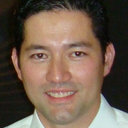Circulating levels of mannose-binding lectin (MBL) in age-related macular degeneration.
Słowa kluczowe
Abstrakcyjny
OBJECTIVE
To assess whether the serum levels of mannose-binding lectin of the lectin complement pathway are associated with age-related macular degeneration.
METHODS
Patients with age-related macular degeneration and age-matched controls underwent full ophthalmologic examination and optical coherence tomography. Using a time-resolved immunofluorometric assay, blood samples were evaluated to determine the serum mannose-binding lectin levels.
RESULTS
A total of 136 individuals were evaluated, including 68 patients with age-related macular degeneration (34 exudative and 34 nonexudative) and 68 age-matched controls. The median mannose-binding lectin level was 608 ng/mL (range, 30-3,415 ng/mL) in patients with age-related macular degeneration and 739 ng/mL (range, 30-6,039 ng/mL) in controls, with no difference between the groups. Additionally, the median mannose-binding lectin level was 476 ng/mL (range, 30-3,415 ng/mL) in exudative cases and 692 ng/mL (range, 30-2,587 ng/mL) in nonexudative cases.
CONCLUSIONS
Serum mannose-binding lectin levels were not associated with age-related macular degeneration or with the exudative and nonexudative forms of the disease.


